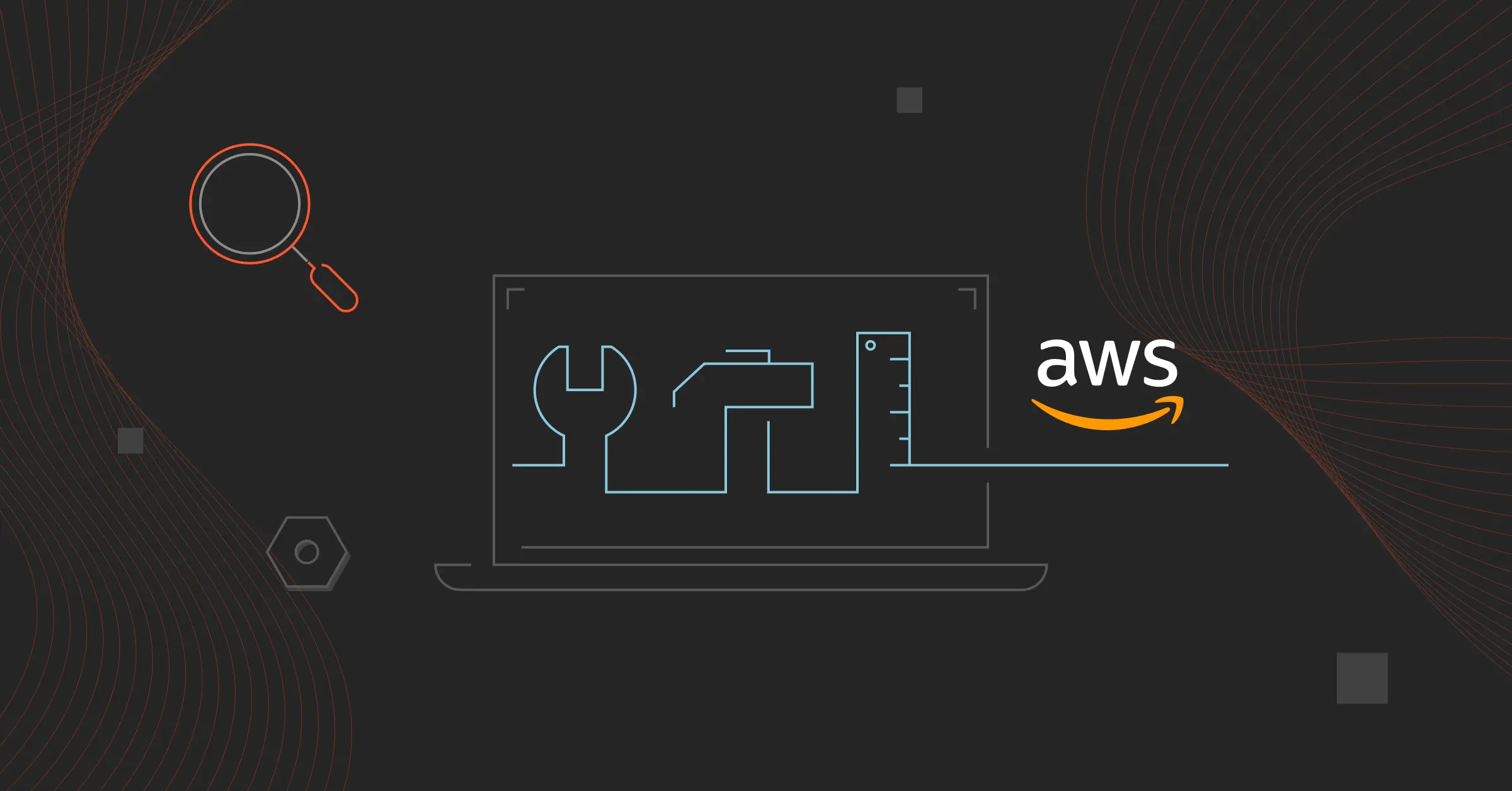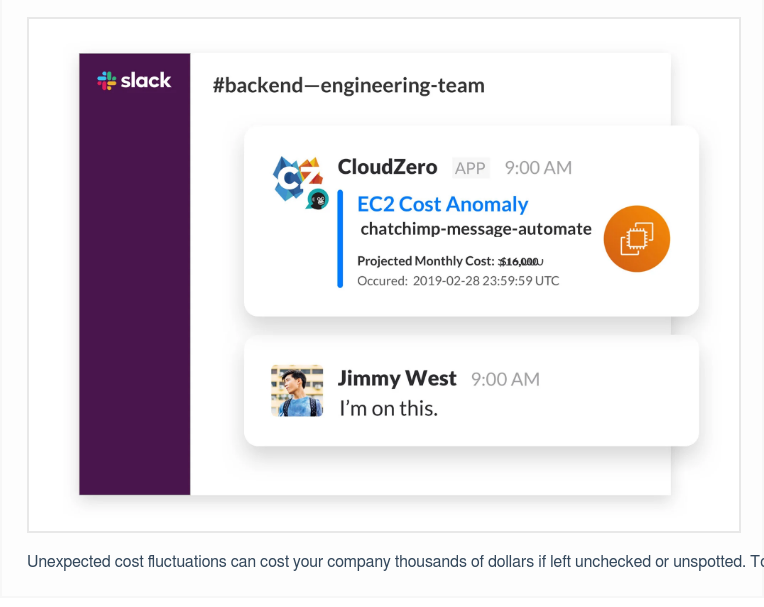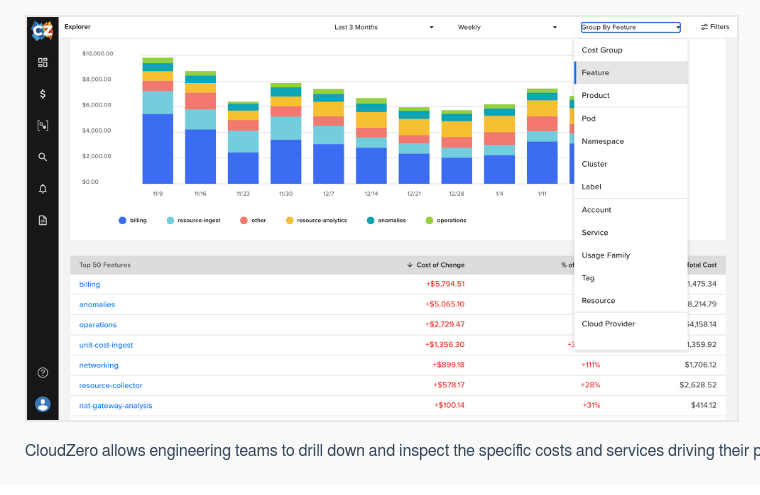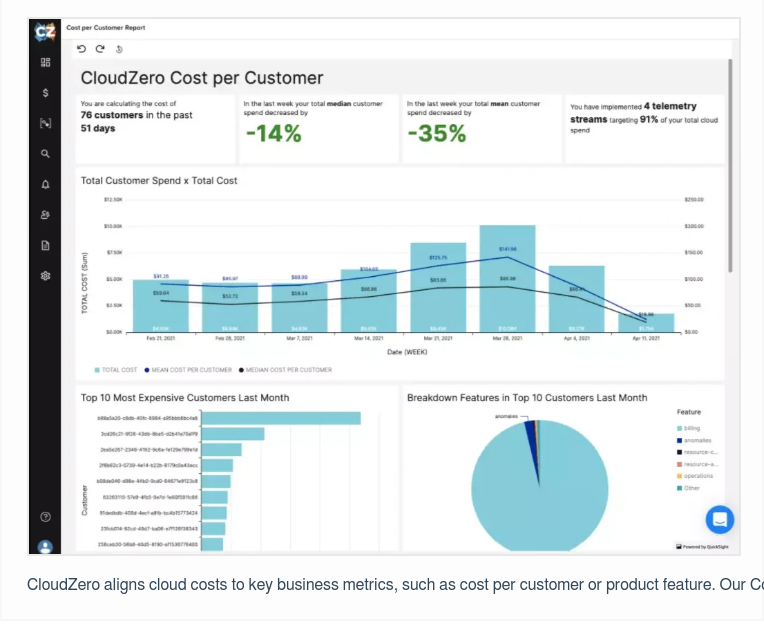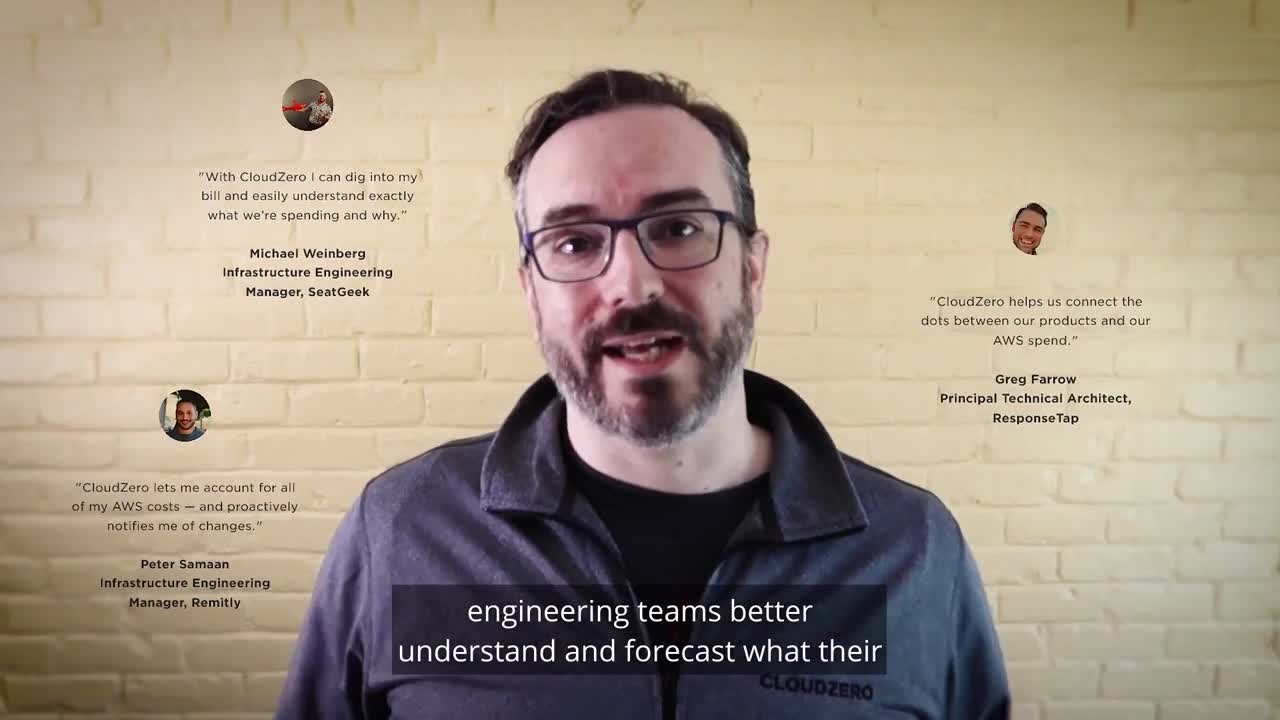While AWS offers significant benefits compared to traditional on-premise infrastructure, its inherent elasticity and scalability tend to give rise to uncontrolled costs.
AWS costs can be opaque and difficult to analyze — and without some system of identifying the source of costs and how to manage them — they can quickly undermine your profit margins.
However, a number of tools have emerged over the past few years to help organizations manage and optimize their costs. In this guide, we’ll look at some of the top AWS cost optimization tools offered by AWS itself and third-party solutions.
We’ll also cover exactly what AWS cost optimization includes, the best practices you can use to reduce or optimize costs, and introduce you to the concept of cloud cost intelligence, which goes beyond traditional AWS cost management to help you connect costs to business metrics — all while empowering your engineering team with cost autonomy.
What Is Cost Optimization In AWS?
AWS cost optimization involves implementing cost saving best practices to get the most out of your AWS cloud investment.
Traditionally, legacy cost tools see cost optimization as a process of simply reducing cloud costs — typically through a number of optimization techniques such as:
- Identifying mismanaged resources
- Eliminating waste
- Reserving capacity for higher discounts
- And right-sizing computing services for scale
But reducing your AWS bill is only one part of AWS cost optimization.
Optimizing costs should be a continuous process that not only looks at ways you can reduce your AWS spend, but how you can align that spend with the business outcomes you care about — and ways you can optimize your environment to meet your business goals.
For example, most SaaS organizations care about their COGS and unit cost (like cost per customer or feature). When organizations can see how cloud spend aligns with these metrics, teams can make cost-informed decisions that improve these areas. Engineering can make software architecture decisions that help improve profitability. Or finance can use this insight to better price the company’s products — and improve gross margins.
This helps engineering and finance better align on AWS spend to make informed decisions that improve profitability — rather than throttle resources to cut costs.
Why Should You Optimize Your AWS Costs?
Unlike on-premise environments that often require heavy upfront capital expenditures (CAPEX) with little or reduced ongoing costs, cloud investments are actually operating expenditures (OPEX). As a result, cloud costs can quickly spiral out of control and become more difficult to track back to efficiency as time passes.
Take cloud scalability, for example.
Cloud auto scaling provides organizations with the flexibility to increase or decrease their cloud storage, networking, computing, and memory power, so they can adjust to fluctuating compute needs at any time. AWS offers pay-as-you-go billing, so you should only pay for the resources you use in this scenario.
But this flexibility can also be a double-edged sword if it leads to a high AWS bill.
For instance, if you use AWS Lambda as your serverless compute service, you might have noticed that it can continue to scale up your cloud resources by 500 instances per minute until your load reduces. While this may help maintain your app’s performance in the event of a DDOS attack, it can spike your AWS spending in just a few hours.
If you don’t have a cost optimization tool that helps you monitor costs — and even detect cost anomalies as they’re happening — then you might be in for an expensive cost overrun in this situation.
Beyond alerting you of cost fluctuations so engineering can address cost issues before they spiral, AWS cost optimization tools can also help you to:
- Monitor and measure your cloud spend.
- See what AWS services cost you the most and why.
- Align AWS cloud costs to business metrics you care about, such as COGS, cost per customer, feature, product, and more.
- Empower engineering to better report on AWS costs to finance.
- Identify cost optimization opportunities you may not be aware of — such as architectural decisions you can make to improve profitability.
- Identify and track unused instances so you can remove them manually or automatically to reduce waste.
- Receive cost optimization opportunities — such as instance sizing recommendations.
- Detect, track, flag, and delete unattached persistent storage, such as Amazon EBS volumes, when you delete an associated instance.
- Identify soon-to-expire AWS Reserved Instances (RI).
- Introduce cost-ownership by showing your teams how each project affects the entire organization’s bottom line, competitiveness, and the ability to fund future growth.
However, using a tool alone isn’t enough.
Whether you’re building a cloud-native app or migrating your on-premises solution to the cloud, we recommend you apply AWS design principles and best practices from the beginning.
In this way, you’ll have a suitable environment for onboarding the various AWS cost optimization tools we’ll discuss below.
What Are Some AWS Design Principles That Enable Cost Optimization?
AWS insists that you must be cost-conscious and details five principles you can use to make sure you’re optimizing your costs.
1. Leverage Cloud Financial Management (CFM)
Operating in the cloud requires a cost-aware approach. It also involves bringing on the right people who can create cost-effective cloud-native solutions.
An effective way to implement CFM is to include engineers in cloud cost ownership rather than just the finance team. Engineers who are empowered to make continuous cost-conscious development decisions can resolve the problem of thinning margins at the technical level.
2. Pay-as-you-go
You can increase or decrease your compute resources with AWS, based on demand.
As an example, if your app sees a high level of traffic earlier in the day and little traffic the rest of the day, save money by reducing resources during the “off-peak hours”. Remember, EC2 instances are billed by the hour, whether or not you use them.
3. Embrace managed services
The public cloud can replace the need for building infrastructure from scratch and spending on necessary hardware, engineering talent, maintenance, and other management responsibilities of a physical data center. It would free your engineers to improve your app’s code rather than infrastructure.
4. Track, analyze, and attribute expenditure right
The cloud enables you to monitor workload usage. We suggest going one step further and tracking your cloud costs by workload, user, and revenue streams. By doing so, you can measure your return on investment (ROI) more easily.
By knowing how much you spend on each customer and how much each deployment and testing project costs, you can then find ways to minimize costs without sacrificing the performance of your cloud solution, which could adversely affect actual business outcomes.
5. Track efficiency
Cost optimization should be measurable, and the results should relate to actual business outcomes. To do so, you need to measure the ‘standard’ costs of outputting particular workloads. Monitoring the cloud inputs and outputs over some time will enable you to achieve this.
Then compare the findings with future measurements to determine when costs are going up, down, or remaining the same. After identifying what actions led to the change, you may use that information to optimize other workloads.
Those AWS design pillars for cost optimization provide a baseline for optimizing your costs. Next, you should implement AWS cost optimization practices.
What Are Some AWS Cost Optimization Best Practices For Success [Checklist]?
The following are some practices you can incorporate into your cost optimization strategy to reduce your AWS spend.
- Right-size your provisions to match your needs.
- Automate cloud cost management and optimization. Try native AWS tools before deploying more advanced tools from a third party.
- Schedule on and off times unless workloads need to run all the time.
- Check the “delete on termination” box when you first create or launch an EC2 instance. When you terminate the attached instance, the unattached EBS volumes will be automatically removed.
- Decide which workloads to use with Reserved Instances and which ones to use with On-Demand Pricing.
- Keep your most recent snapshot for a few weeks, then delete it as you take even more recent snapshots that can restore your data in the event of a disaster.
- Avoid remapping an Elastic IP address more than 100 times a month. No charges will apply if you do.
- If you cannot, use an optimization tool to find and release unattached IP addresses after terminating the instances to which they are attached.
- Upgrade to the latest AWS instance generation to improve performance at the same or lower cost.
- Use optimization tools to find and terminate unused Elastic Load Balancers and instances that failed to launch.
- Transfer data you infrequently use to a lower-cost tier.
- Optimize your cloud costs as a continuous part of your DevOps culture.
Now let’s look at the tools you can use to optimize your AWS bill and when to use them.
The 15+ Best AWS Cost Optimization Tools By Category
AWS cost optimization tools fall into several categories. Below, we’ve broken them down by category and listed reasons you might use or might not use these tools, depending on your situation and needs.
Follow along or select the section you want to read first using the links below:
Cloud Cost Intelligence Solutions
Instead of only showing total cloud costs, such as monthly EC2 spend, cloud cost intelligence enables engineering teams to see the cost of the features they’re working on, with relevant context. With this cost insight, they can treat cost like any other performance metric, influencing their decisions, from development to detecting and debugging an issue in production.
Engineers can understand how their technical decisions and actions impact real business outcomes on a per-unit basis, such as the cost per customer, team, or feature.
1. CloudZero
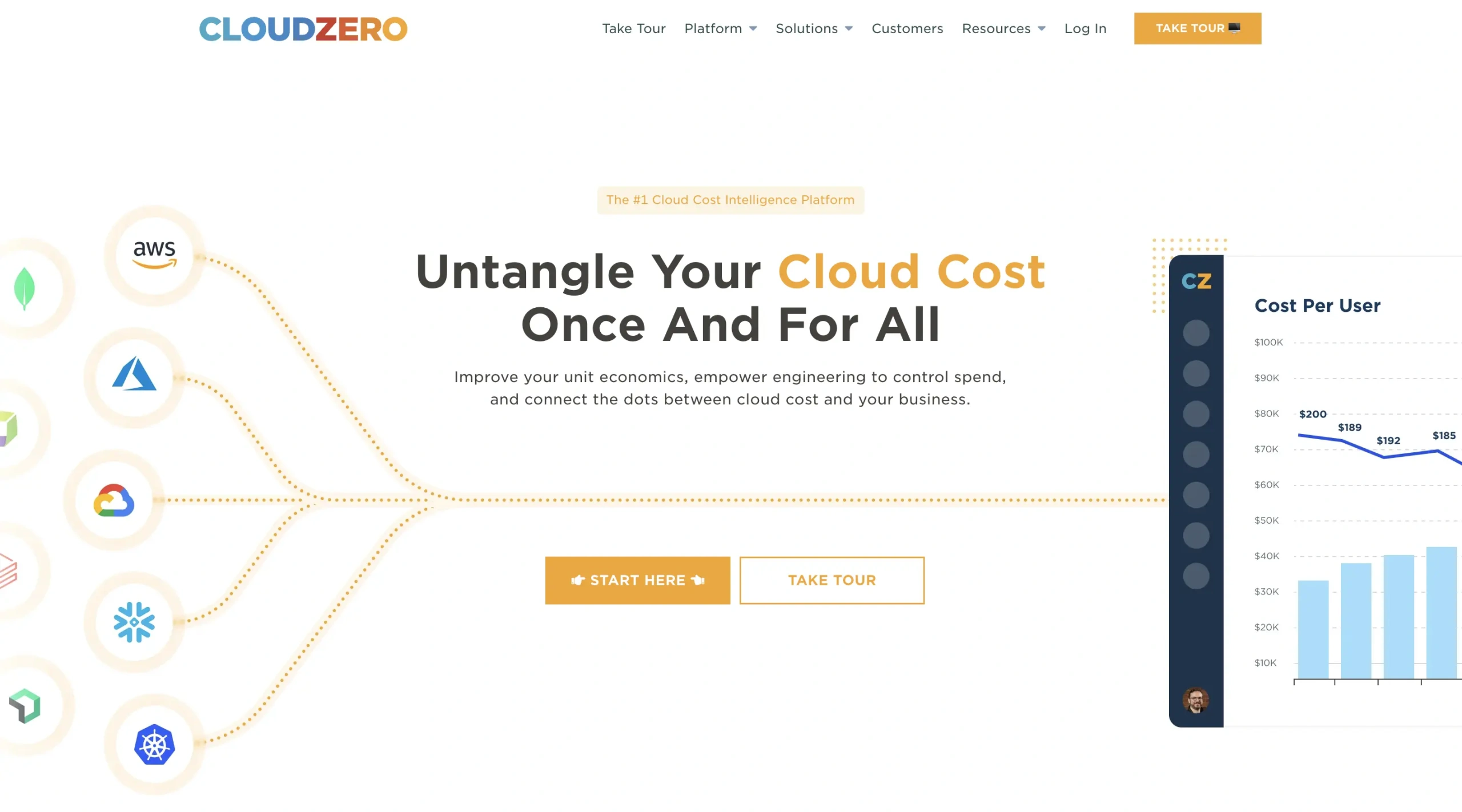
CloudZero is an excellent example of a cloud cost intelligence solution. It offers dev teams specific views, easily explorable context, and automatic cost anomaly alerts — all without extensive manual tagging.
Companies can use CloudZero to understand their costs through unit cost analysis, Kubernetes cost monitoring, Snowflake cost intelligence, cost per feature, per customer, and more.
Engineers can drill into cost data from a high-level down to the individual components that drive their cloud spend — and see exactly what AWS services cost them the most and why. Finance will love it too — as engineering can better report on AWS costs — and finance members can uncover vital business metrics like COGS, unit cost, and cost per customer.
With cloud cost intelligence, engineering can make informed development and architecture decisions that help improve profitability — and finance can make business decisions such as improving pricing for different target segments. Request a demo today to see how CloudZero works.
AWS Native Tools
Free, native AWS tools may be a good starting point for small companies with a relatively straightforward cloud bill.
Here are several examples:
2. AWS Cost Explorer
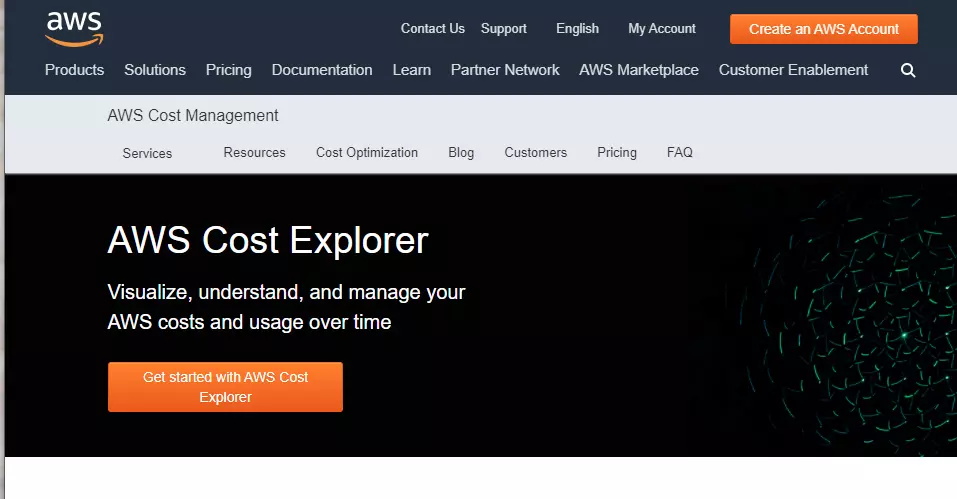
AWS Cost Explorer offers an easy-to-use interface for visualizing, understanding, and managing AWS costs and usage over time.
3. AWS Cost Anomaly Detection
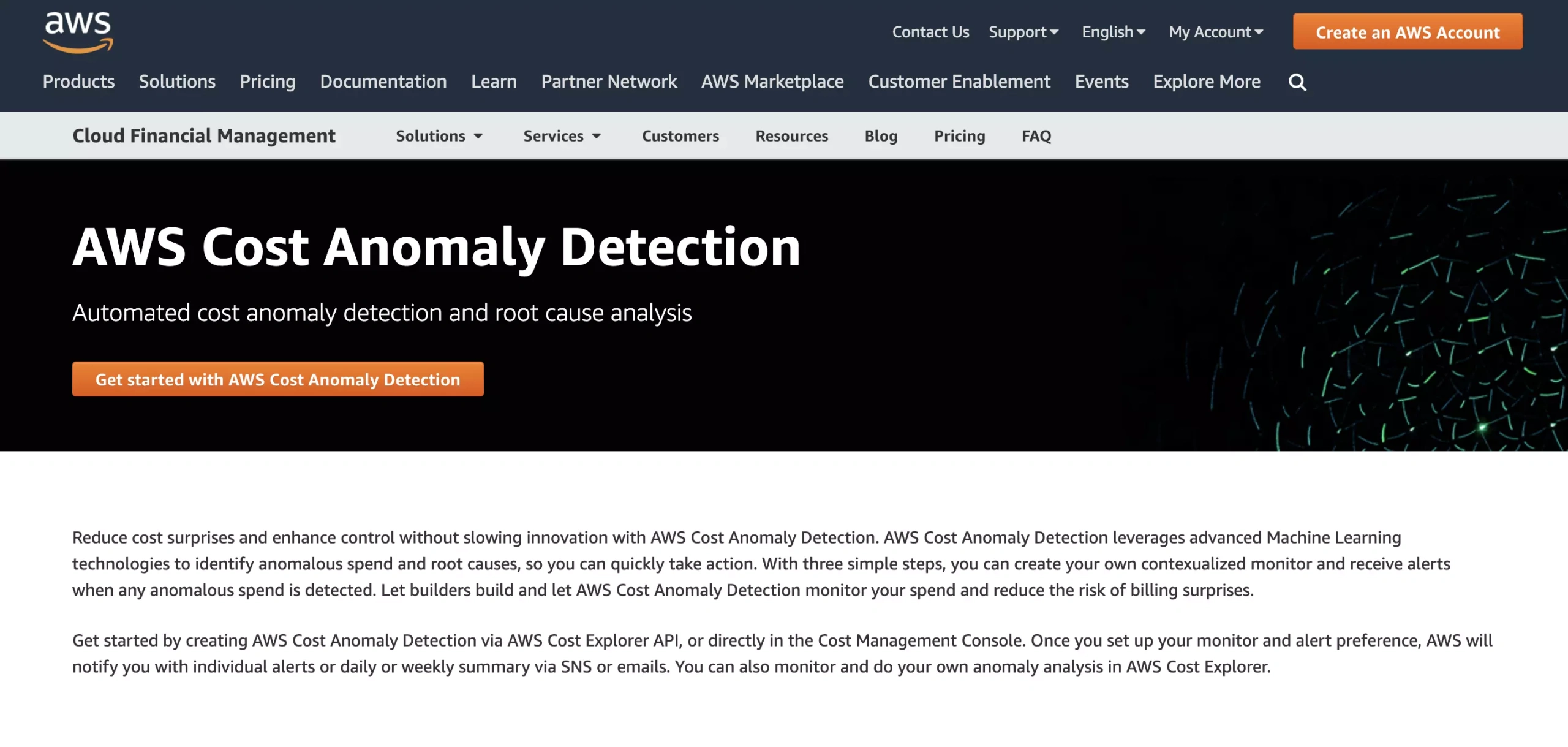
AWS Cost Anomaly Detection uses advanced machine learning technology to identify abnormal spending patterns and root causes so that you can react quickly.
4. AWS Trusted Advisor
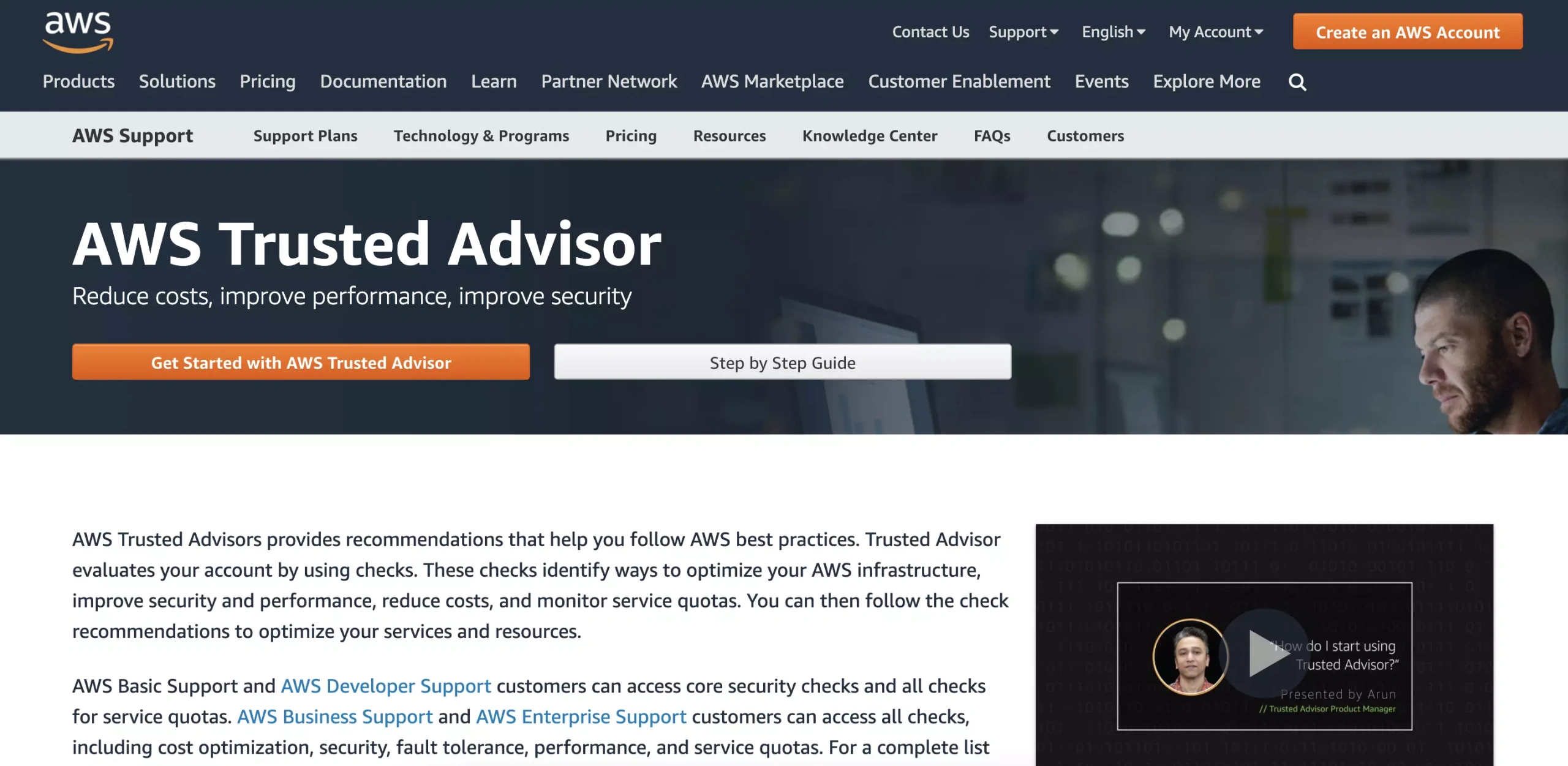
AWS Trusted Advisor provides recommendations for how you can optimize your AWS environment, including improving your costs.
5. AWS Budgets
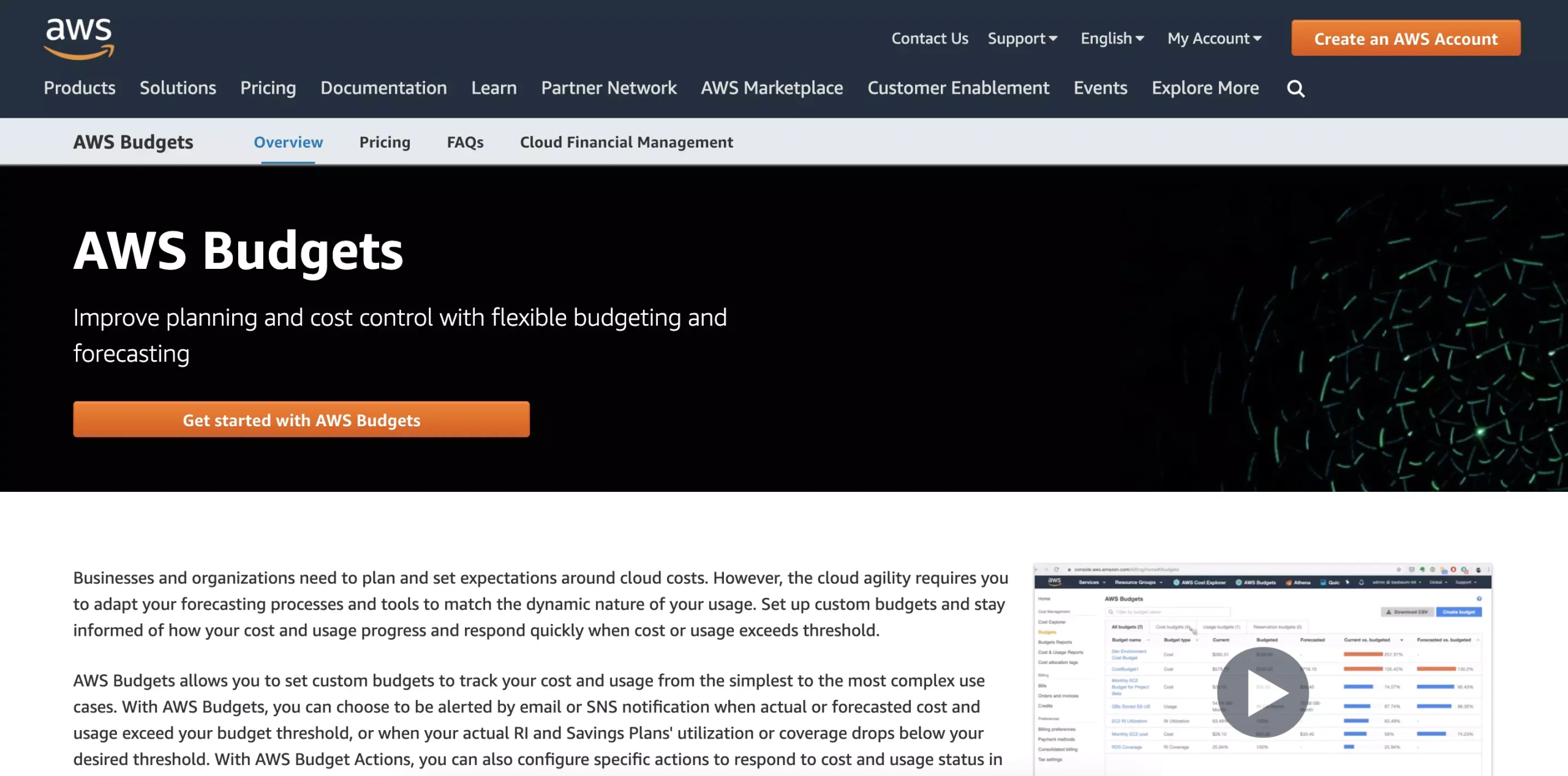
AWS Budgets lets you set a “cost ceiling” based on types of resources, tags, and accounts, so when your costs surpass your budget, you’ll receive an alert to intervene before you go over your limit.
You can also use AWS CloudWatch, Cost and Usage Report, Cloudtrail, and S3 Analytics to monitor the public cloud for instances that may affect your costs.
Native AWS cost optimization tools can help your organization start to improve both its cost-awareness and cost visibility into AWS workloads. When you reach significant spending across multiple AWS accounts, however, you might need to upgrade to a more robust cost management solution.
Traditional Cloud Cost Management And Optimization Tools
Many of these tools came up about a decade ago when AWS offered little to help engineering and finance teams understand AWS billing. The tools are widely used and can be effective for reporting on cost, helping with Reserved Instance and Savings Plan purchasing, and waste reduction.
These tools cater primarily to finance or FinOps, a centralized team or user that interfaces between engineering and finance.
6. VMware CloudHealth
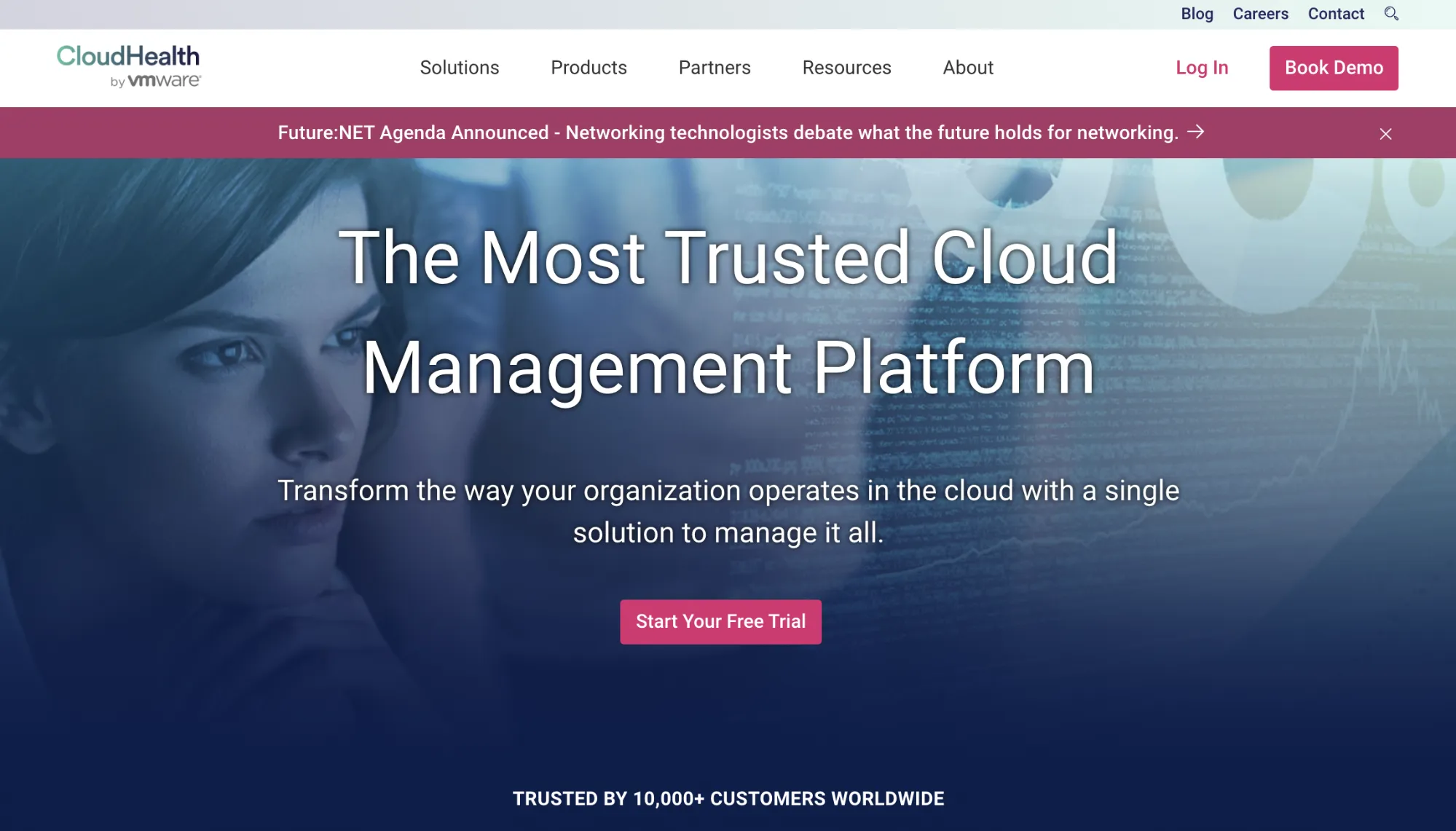
VMware CloudHealth provides cloud computing services related to cost management, governance, automation, security, and performance. VMware acquired CloudHealth and has since shifted toward a multi-cloud and hybrid-cloud focus.
7. Apptio Cloudability
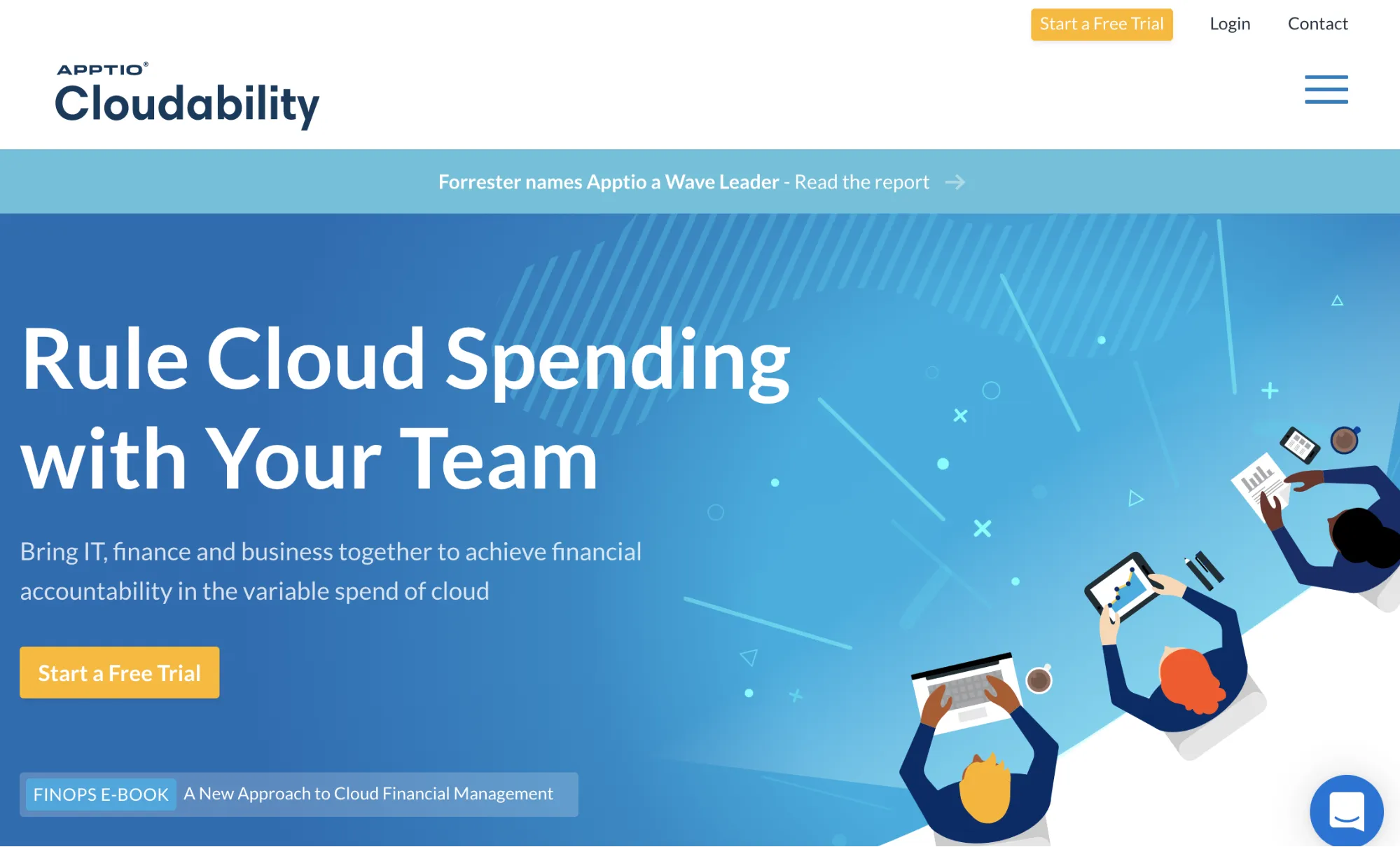
Apptio Cloudability optimizes cloud resources and translates bills and tags into insights to provide real-time clarity and accountability for consumption.
8. CloudCheckr
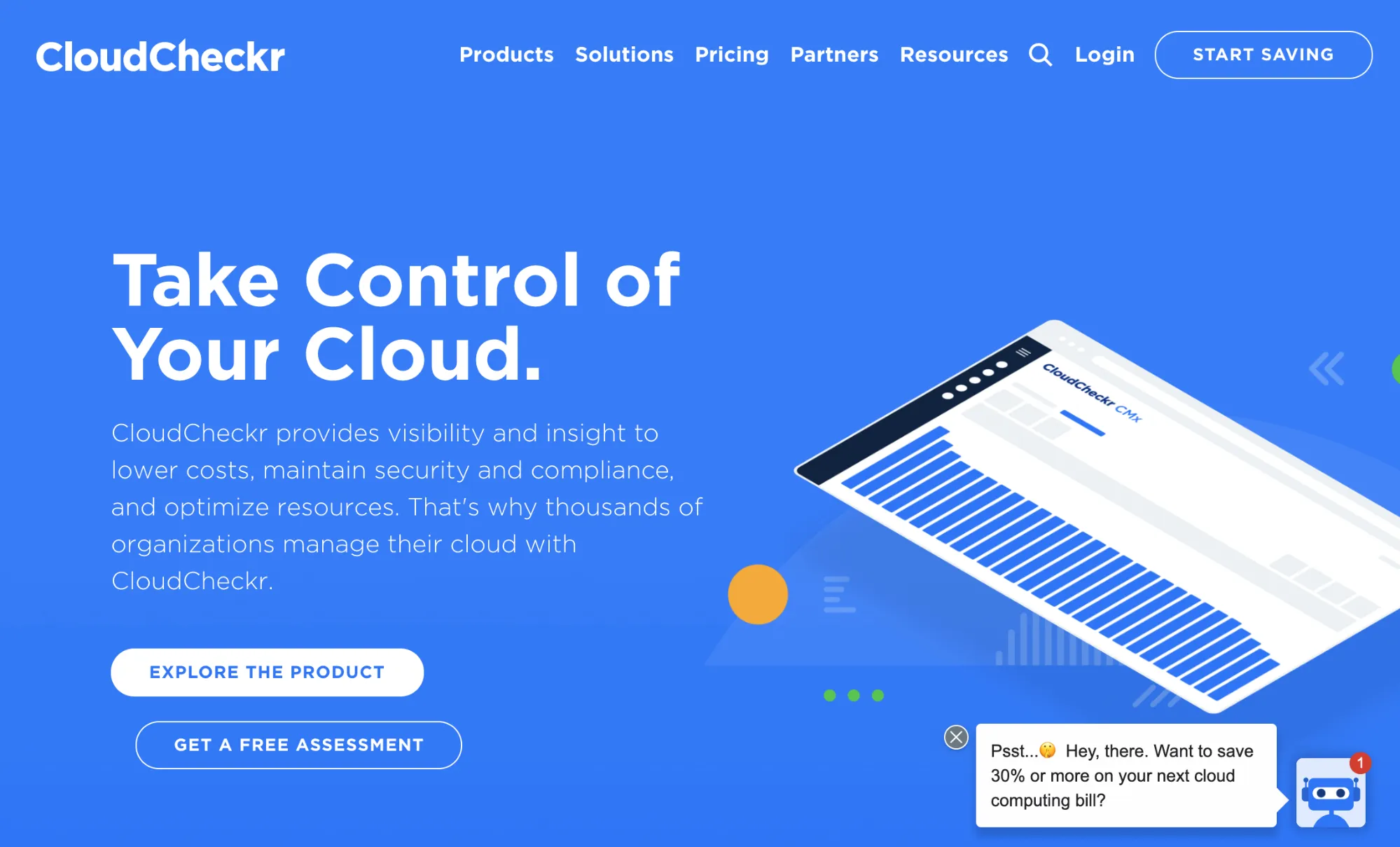
CloudCheckr provides visibility and insight to lower costs, maintain security and compliance, and optimize resources.
9. Densify
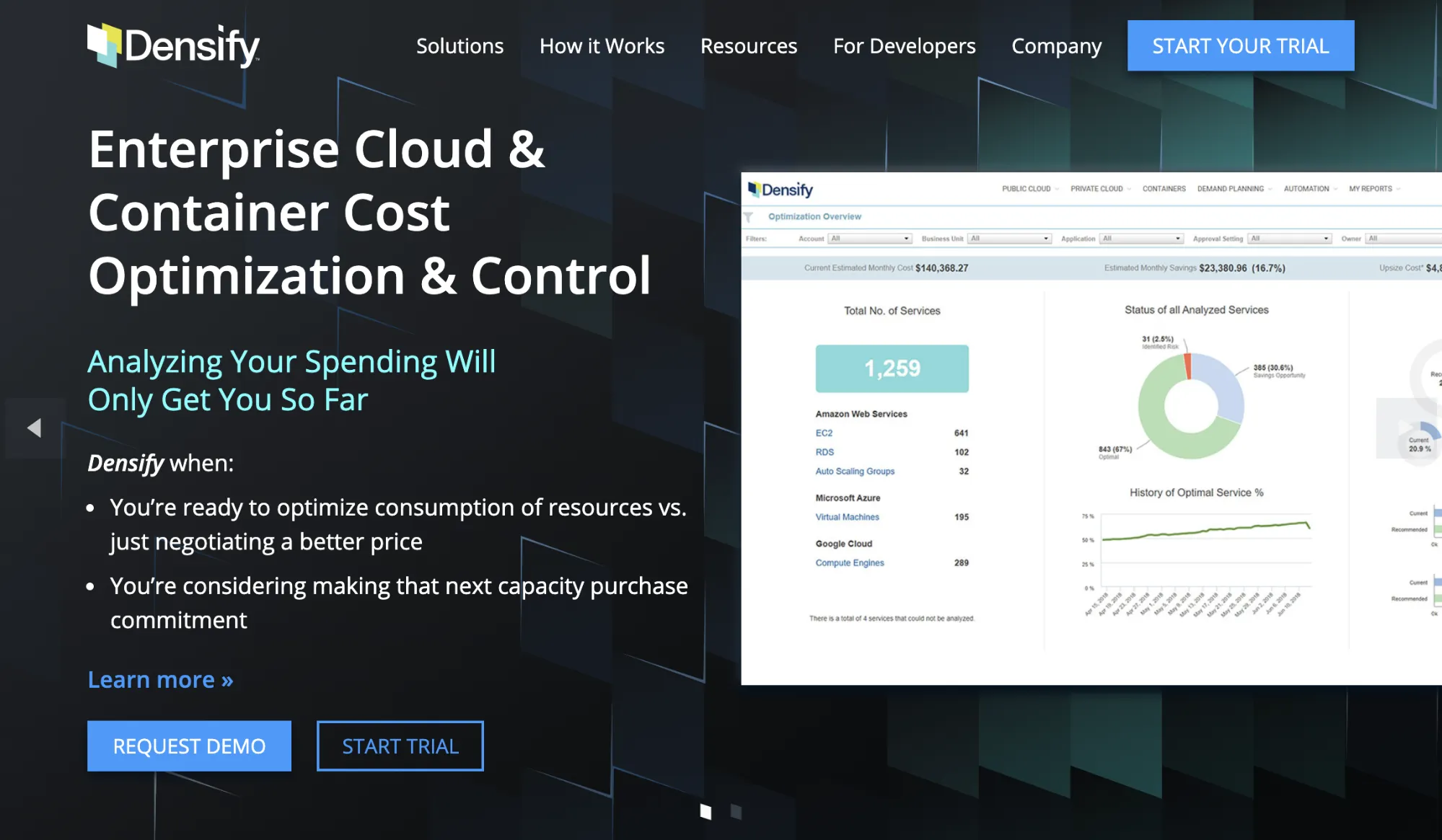
Densify offers enterprise cloud and container cost optimization and control.
Because traditional tools rely heavily on tags, they can be challenging to maintain and frequently require review to ensure accuracy.
Point Solutions For AWS RI Management
These types of DevOps tools can be beneficial if you are looking for a fully automated solution for managing Retirement Plans and Savings Plans.
10. ProsperOps
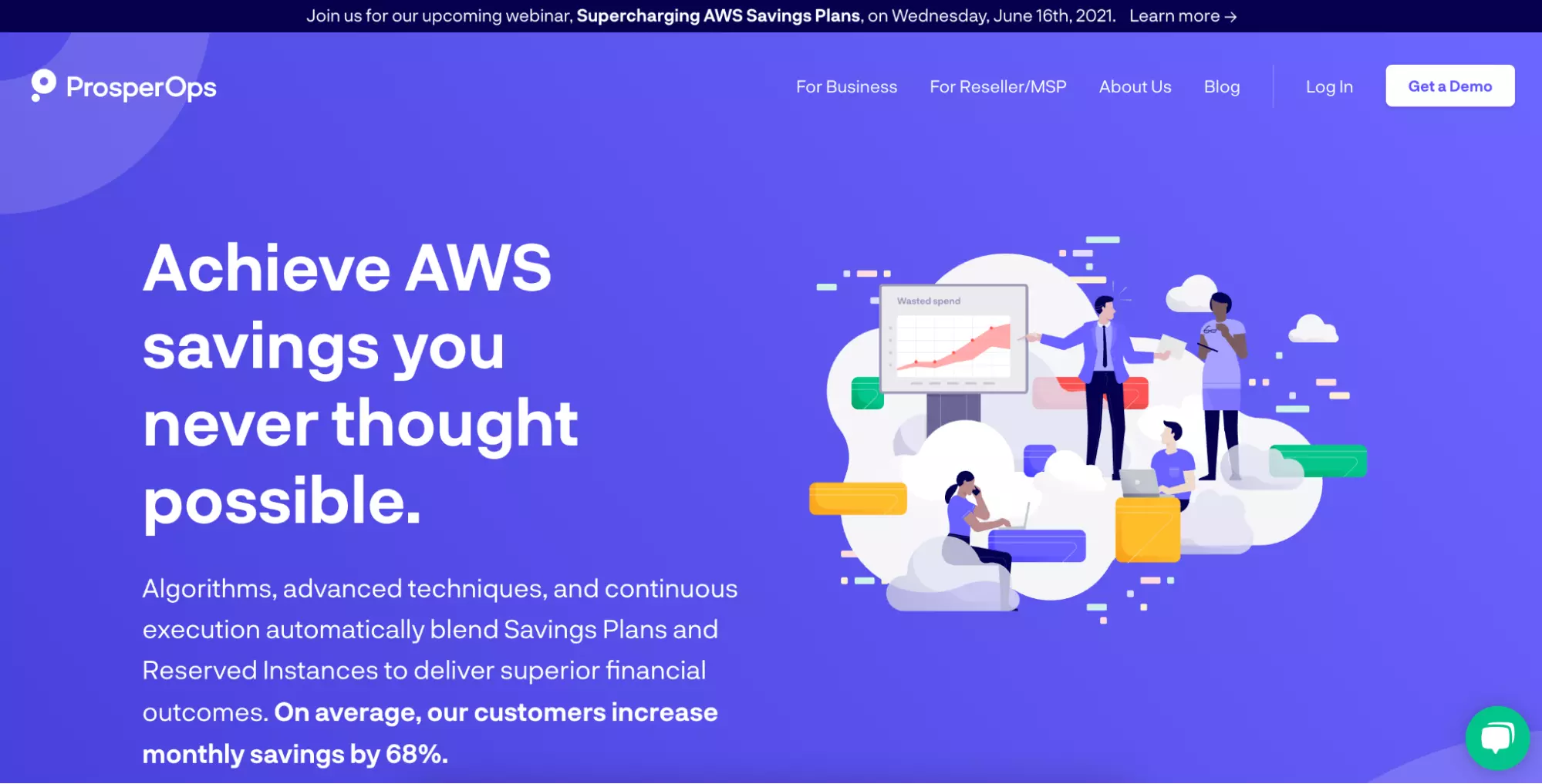
ProsperOps provides superior financial outcomes by automatically blending Savings Plans and Reserved Instances with advanced algorithms, advanced techniques, and continuous execution outcomes.
These tools are limited to this sub-segment of cost optimization, so you might need to use them in combination with other tools.
11. NOps
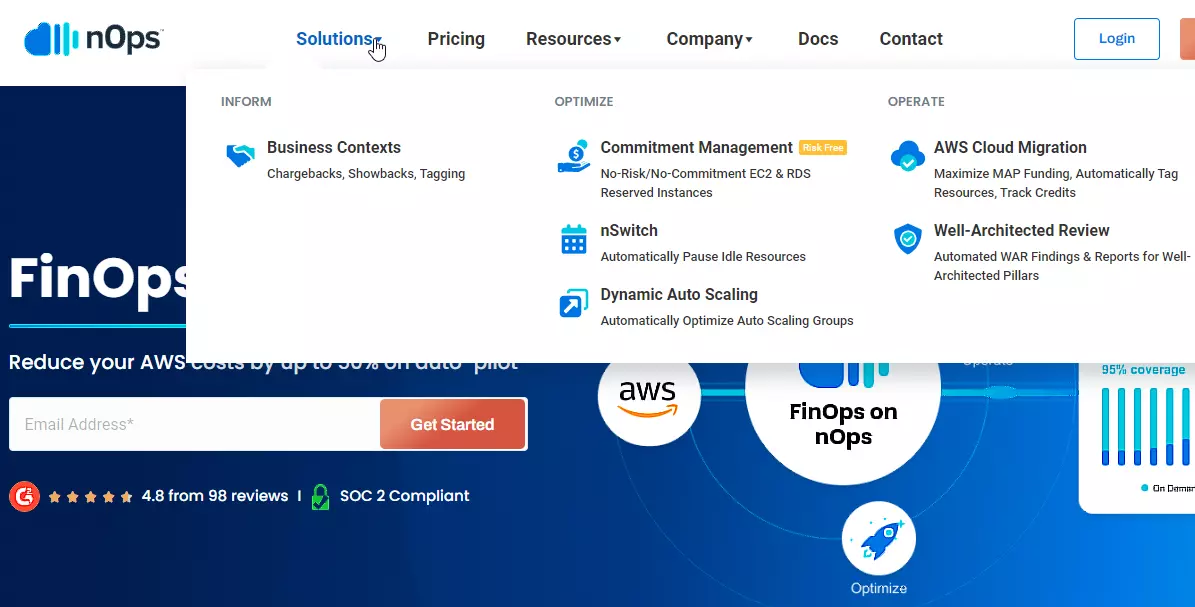
The nOps cloud management platform promises to help you reduce your AWS spend by up to 50% on autopilot. It does this by leveraging machine learning to identify your usage patterns and associated costs.
nOps then manages your reservations, detects and stops unused resources, and runs workloads on the most cost-effective spot instances. NOps also optimizes container clusters and can help align your setup with the AWS Well-Architected Framework. Because it is a SaaS platform, you can run it as a standalone solution, or get it through the AWS Marketplace.
12. Zesty
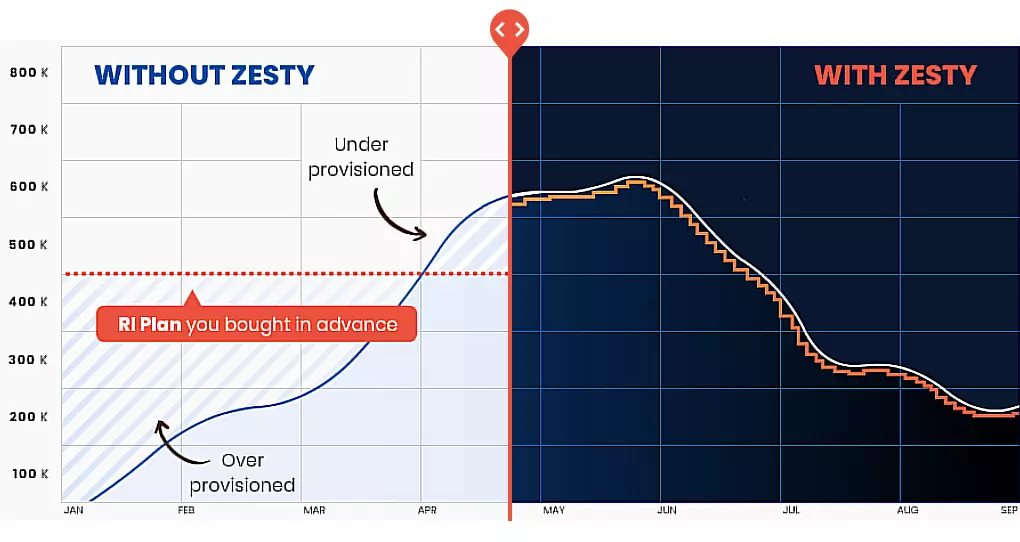
Zesty scales your cloud resources to meet your real-time business demands. It does this by automating storage, AWS Reserved Instances, and Savings Plans management.
Zesty dynamically adapts these discount commitments to your real-time usage needs by continuously buying and selling AWS Reserved Instances. With Zesty Disk, you can automatically shrink and expand block storage volumes based on real-time usage to save up to 70% on cloud storage costs.
13. FinOut
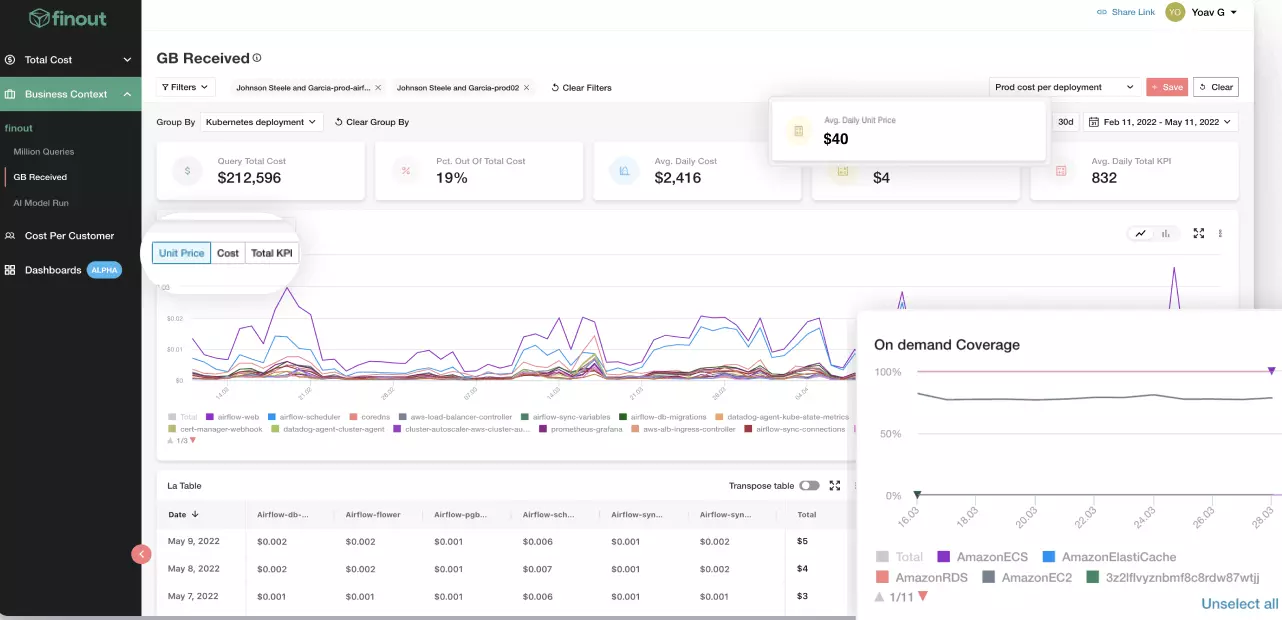
Unlike native cost tools, Finout provides deeper insights into your cloud spend. You can see your costs per cost center, namespace, and more. In addition, you can analyze usage-based costs using customizable dashboards and reports.
Also, you can set up custom alerts to reach your team when certain usage or cost milestones are met. Ultimately, Finout enables you to keep track of costs across major cloud platforms including AWS, GCP, Kubernetes, Snowflake, and Databricks.
AWS Continuous Cloud Optimization Tools
This category of tools uses AI or machine learning to change infrastructure and applications to reduce overall cost and improve efficiency automatically and continuously.
These solutions are a great first step to reduce overall costs, and can create immediate savings with minimal work. Many are also priced based on savings, so they cost nothing upfront.
Here are some examples:
14. Spot.io
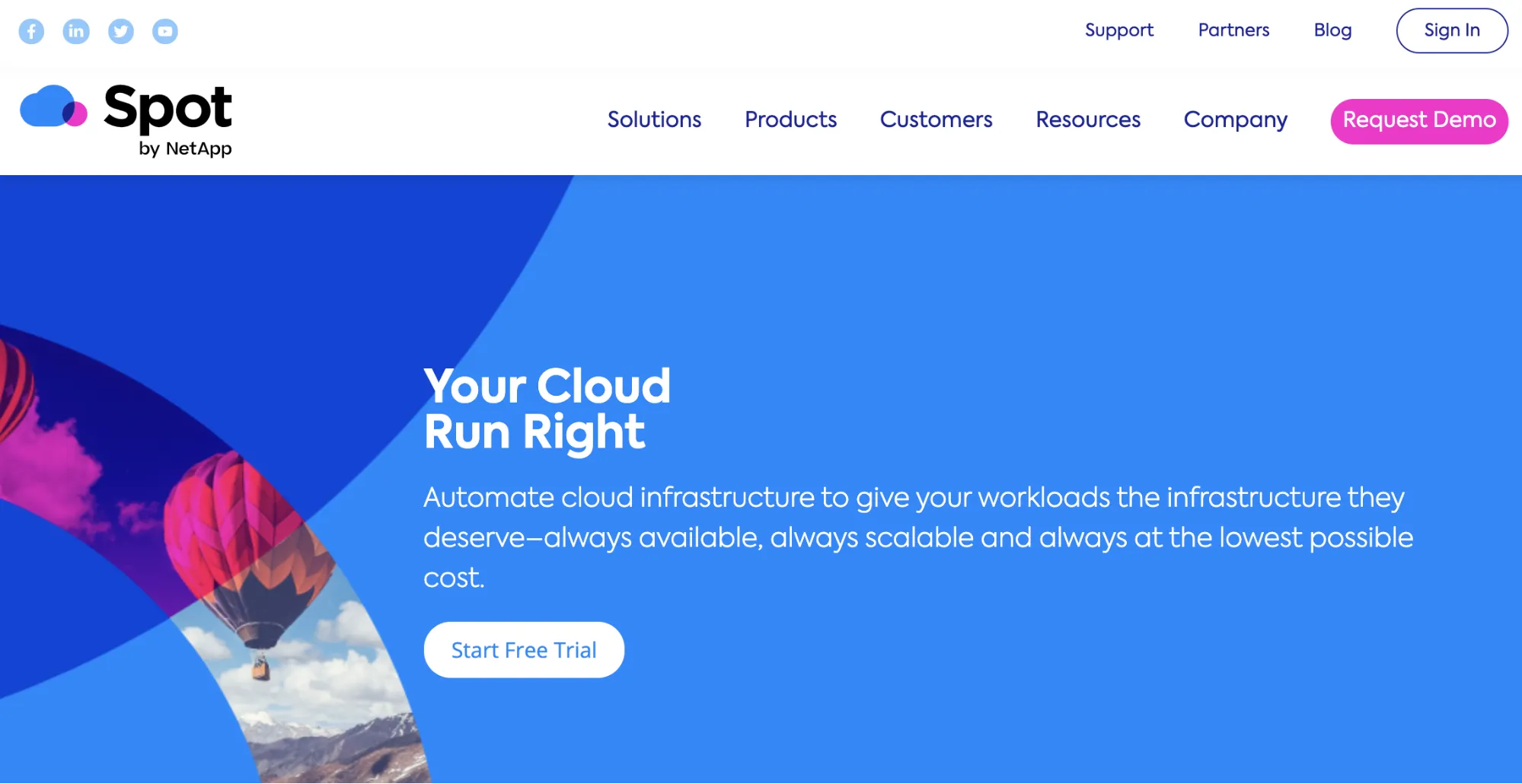
Spot.io automates cloud infrastructure to provide your workloads with always-on, always scalable, and always cost-effective infrastructure. With Spot.io, you can continuously optimize your infrastructure, maximize utilization, and leverage the lowest-cost computing resources available.
15. Opsani
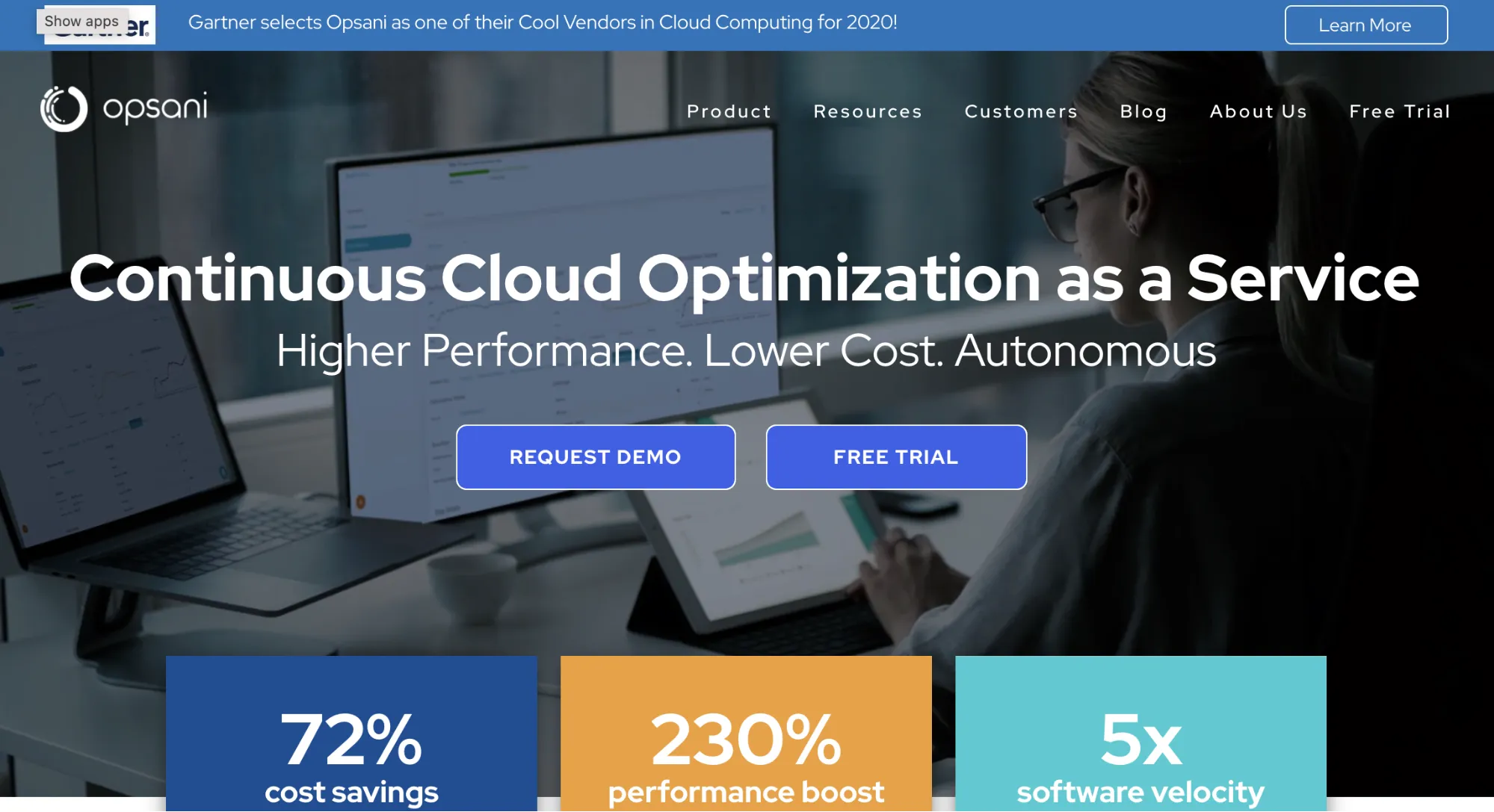
Opsani continuously reconfigures and optimizes cloud workloads based on the latest in AI and Machine Learning with every new code release, load profile change, and new infrastructure upgrade.
Opsani can optimize applications across an entire service delivery platform or within a single application, autonomously managing runtime environments and tuning applications at scale.
16. Granulate
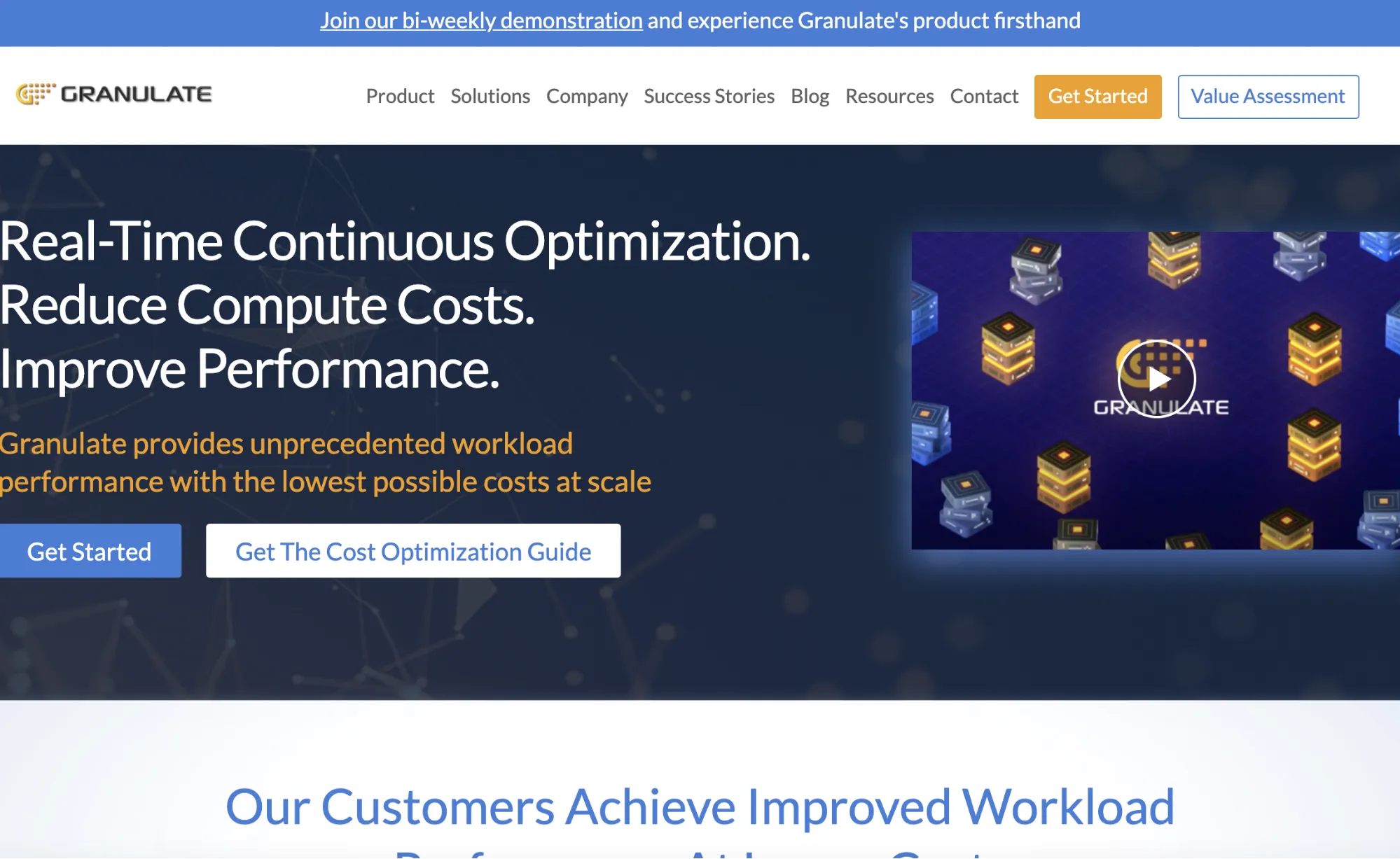
Granulate optimizes infrastructure performance and costs by implementing continuous OS-level adjustments driven by AI.
These solutions have complex use processes and require a more complex allocation of computation resources. But they provide a more customizable, manageable system for optimizing the type of computing resources you use.
You probably won’t use these solutions if you cannot easily manage your workloads with an outside service — or you have already developed high-performance applications using AWS optimization tools.
There is also the possibility that your workloads won’t match these solutions, mainly if they are stateful and can’t be turned on or off easily.
17. Xosphere
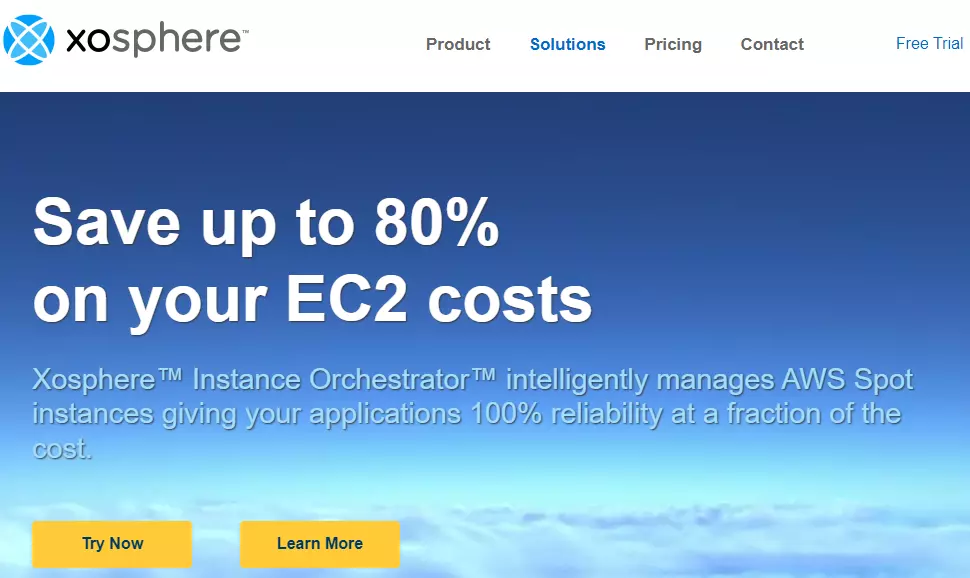
The Xosphere Spot instance orchestration tool works natively with Amazon Auto Scaling Groups, monitoring instances within every group.
As soon as Spot Instances become available at a reasonable price, the platform switches your workload over to more cost-effective Spot Instances instead of costly On-Demand instances. As soon as this Spot Instance capacity is no longer available at a reasonable price, Instance Orchestrator replaces it with On-Demand instances just in time to prevent downtime.
By switching from one instance type to the other as needed, Instance Orchestrator ensures high availability and low costs. A CloudZero partner, Xosphere’s continuous discounting solution is accessible though CloudZero’s discount instruments dashboard.
18. Cloudbolt
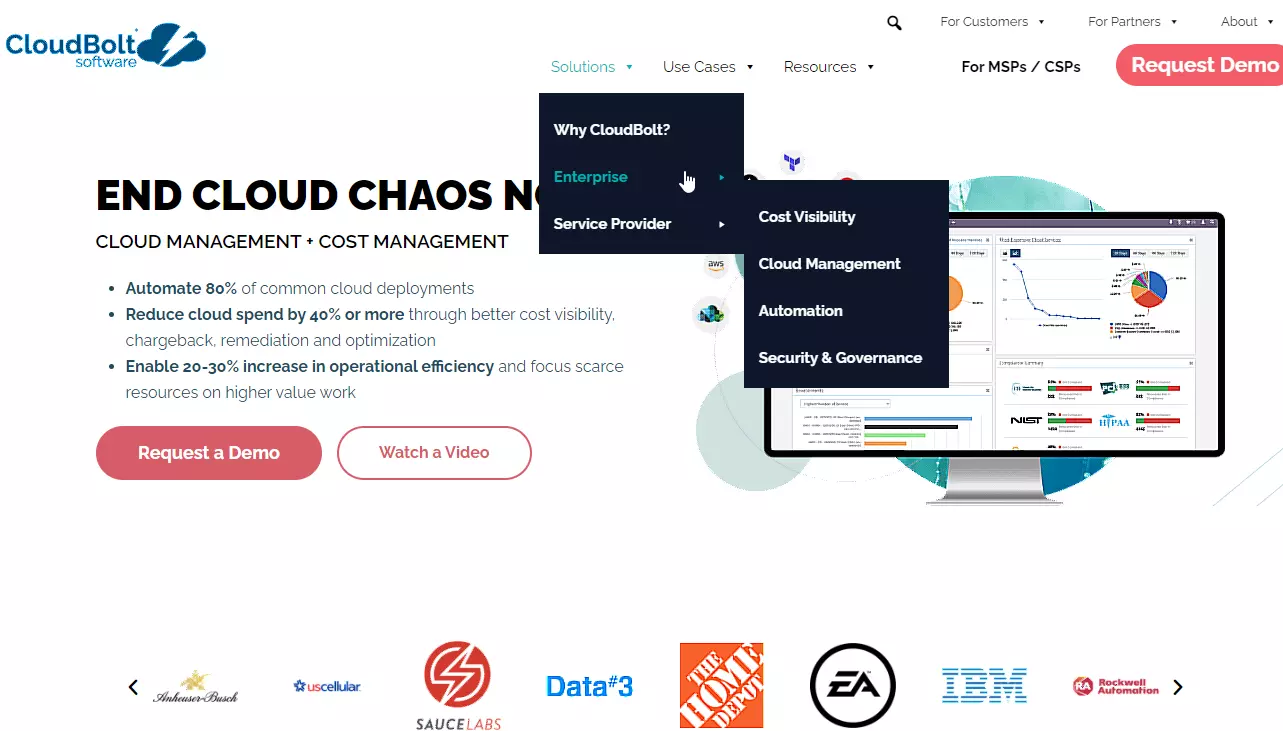
Cloudbolt is a robust hybrid cloud and multicloud cost management platform. Like CloudHealth or Cloudability, Cloudbolt is more suitable for enterprise cloud cost management on AWS.
The platform enables you to identify idle resources, autonomous resource orchestration using custom policies, and integrating multicloud cost data in a single platform for unified analysis.
With Cloudbolt, you can also get tailored recommendations on where to improve, define quotas to maintain cost compliance, and build security directly into your workloads to prevent cost overruns.
19. Harness
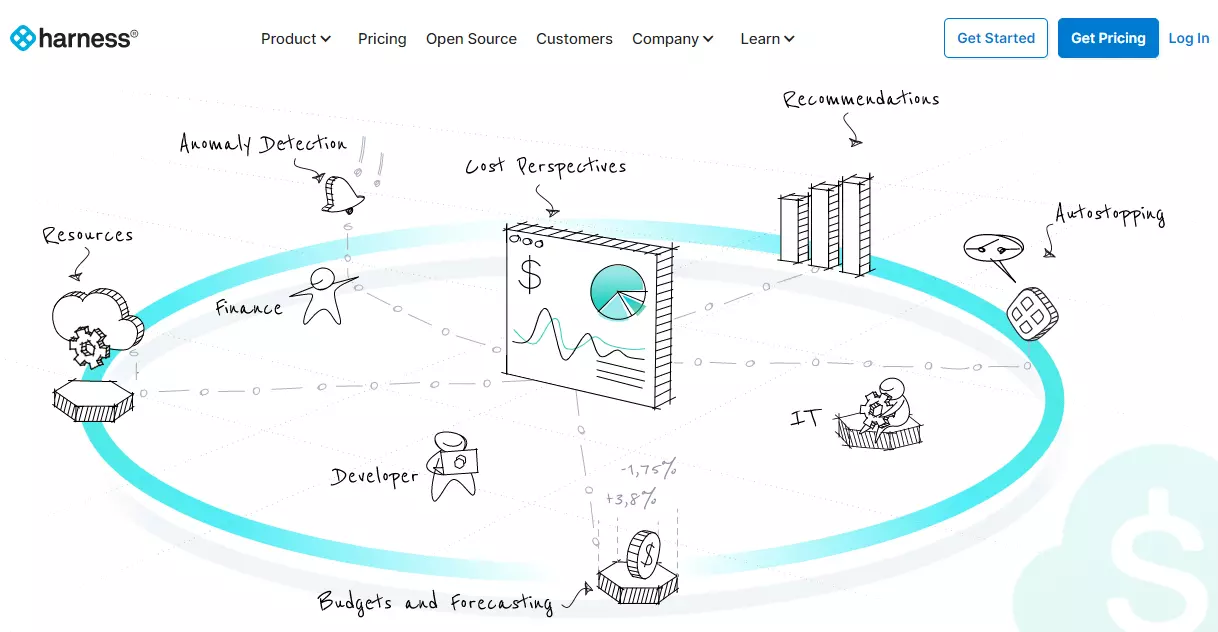
Harness started as a cloud management platform for DevOps teams, not finance and FinOps professionals.
But with Harness Cloud Cost Management, you can collect, analyze, and report your hybrid cloud costs, including across AWS services. It also offers customizable dashboards, cost categories, and Kubernetes cost analysis.
Detect, analyze, and resolve cost anomalies as they arise to prevent costly problems. In addition, it actively manages idle cloud resources without requiring custom scripts or manual engineering.
20. Yotascale
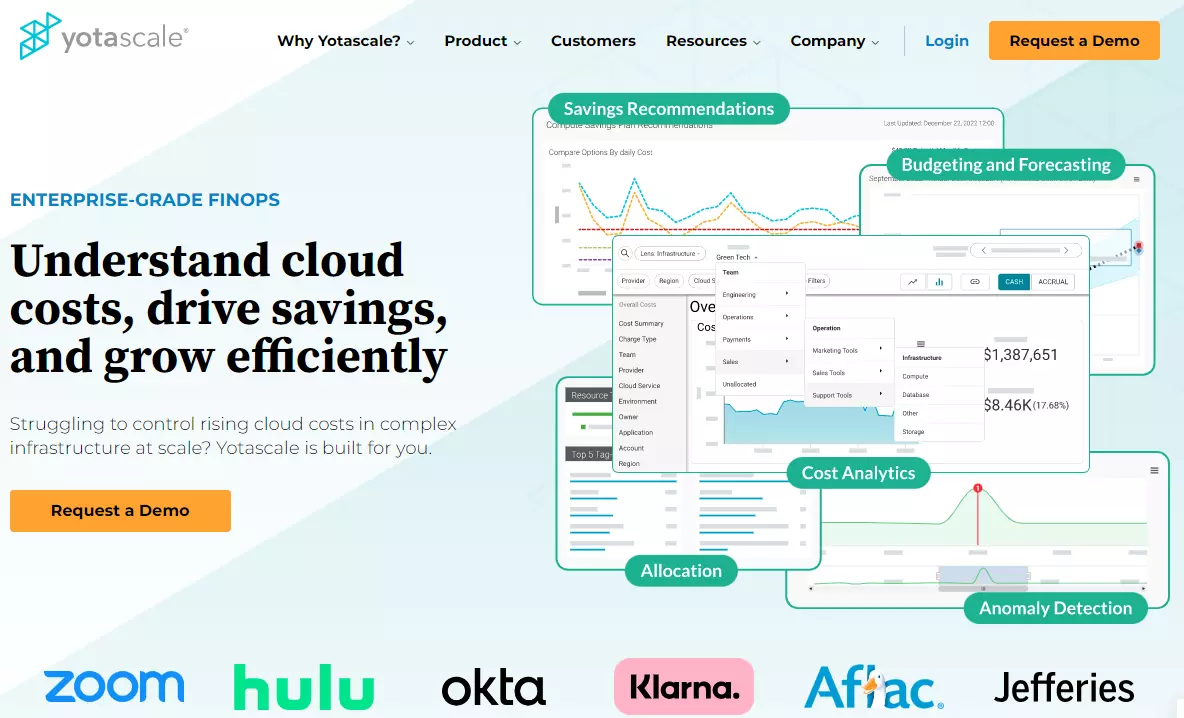
With Yotascale, you get an enterprise-grade AWS cost management platform for FinOps teams. It offers a detailed view of AWS and multi-cloud infrastructure spending. This includes containers and Kubernetes.
Better yet, Yotascale provides decent cost allocation, automated cloud budgeting and forecasting, as well as real-time cost anomaly reports. The platform also supports advanced workload right-sizing and AWS RI and SPs management.
It then generates savings recommendations to give your teams the precise improvements they can make immediately to boost cost-efficiency and productivity.
AWS Kubernetes/Container Cost Optimization Tools
If you are working in Kubernetes most of the time, one of these tools may be helpful. Solutions in this category focus only on cluster activities. While some of these tools are reporting tools, others provide recommendations.
Consider these examples:
21. Amazon ECS
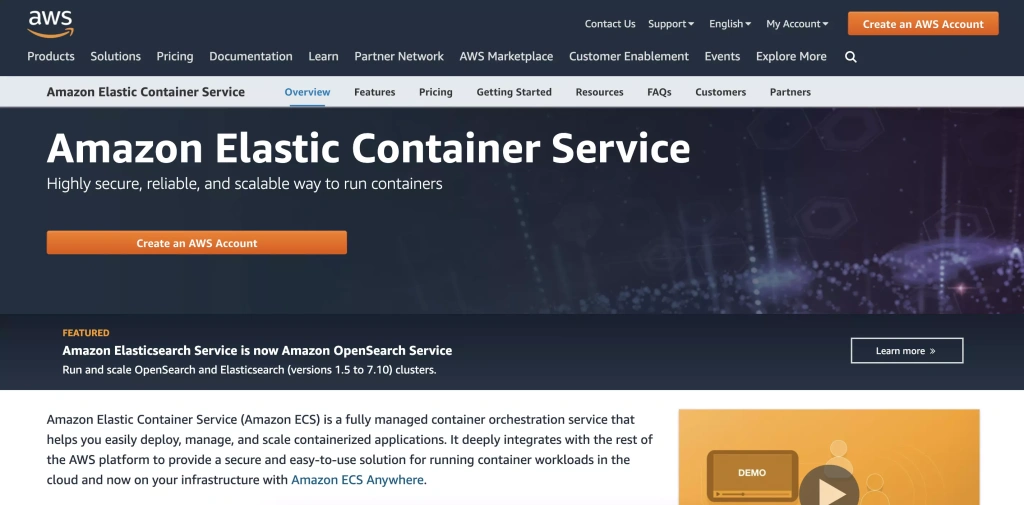
Amazon Elastic Container Service (Amazon ECS) is a fully managed container orchestration service.
22. Amazon EKS
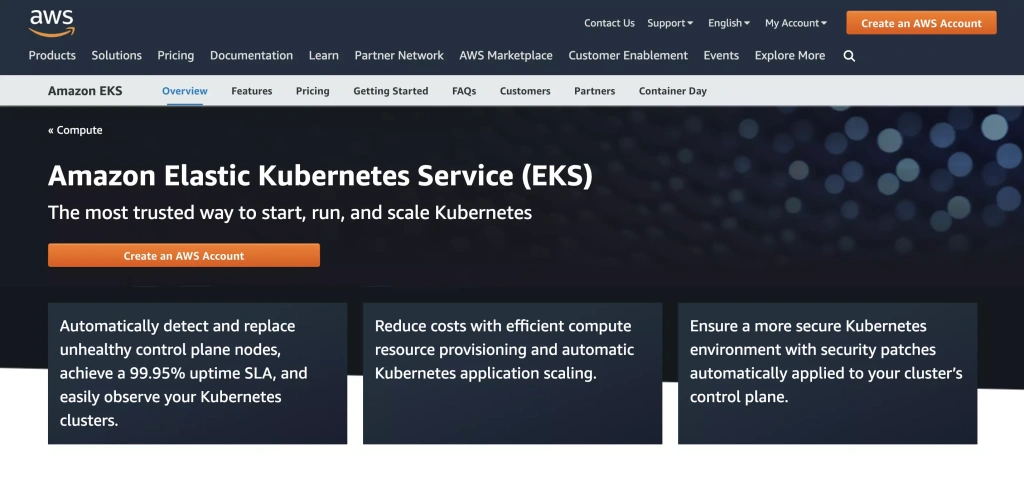
Amazon Elastic Kubernetes Service (Amazon EKS) gives you the flexibility to start, run, and scale Kubernetes applications in the AWS cloud or on-premises.
Debating between EKS and ECS? Check out our ultimate comparison guide here.
23. Kubecost
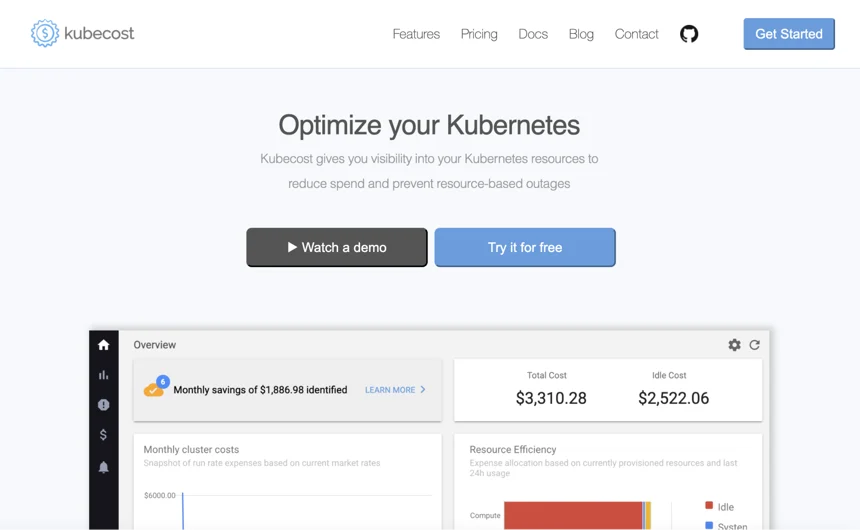
Kubecost gives you visibility into your Kubernetes resources to reduce AWS spend and prevent resource-based outages.
24. GitLab
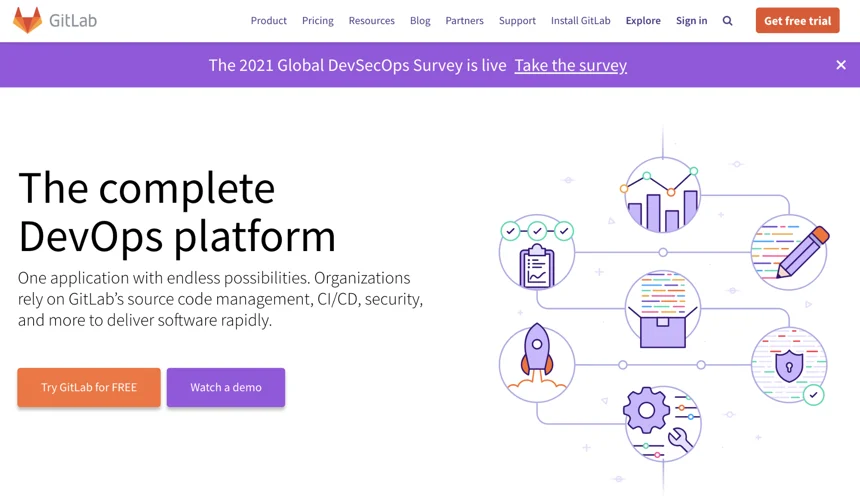
GitLab provides organizations with source code management, CI/CD, security, and more to deliver software rapidly.
25. Replex.io
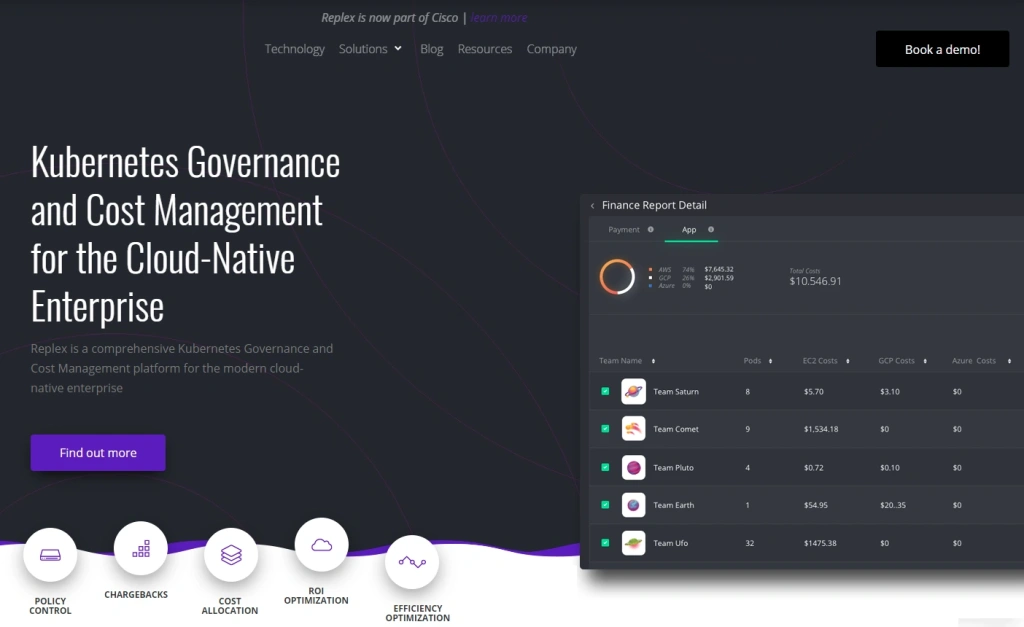
Replex.io offers Kubernetes governance and cost management for the cloud-native enterprise.
26. Spot Ocean
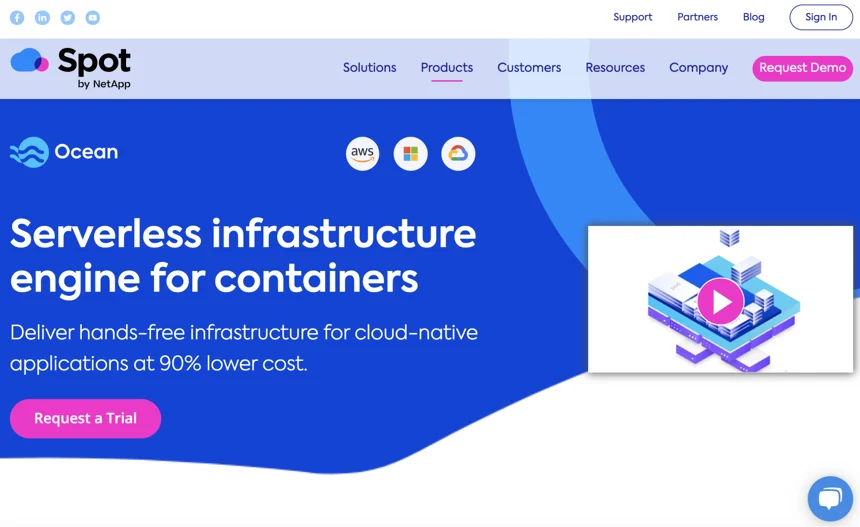
Spot Ocean is a serverless infrastructure engine for containers.
Software development teams use managed databases and a variety of services to release their products. Since these tools don’t cover all cloud costs, they are less effective than a more comprehensive solution.
CloudZero Can Be The Comprehensive AWS Cost Optimization Solution You Need
There are a number of options for AWS cost optimization — and deciding which direction to go can be overwhelming.
While cost optimization has traditionally focused on waste reduction and purchasing plans (like reserved instances) — many forward-thinking companies today are increasingly focused on engineering enablement and architectural optimization.
Companies realize that cost optimization isn’t only about reducing AWS costs but also involves enabling engineering teams to have the cost intelligence they need to make cost-informed development decisions that lead to profitability.
Even more, engineering needs to be able to properly report on cloud spend to finance — and see how that spend aligns to the business metrics they care about.
With a cloud cost intelligence platform, like CloudZero, engineering teams and organizations can do just that. Engineers are empowered to see the cost impact of their work and can see how code changes affect their AWS spend. Additionally, CloudZero aligns costs to business metrics like COGS, unit cost, and cost per customer — so teams can make informed business decisions.
If you’re concerned about overspending, CloudZero even has automated cost anomaly alerts that notify engineers of cost fluctuations so teams can address any code issues to prevent a cost overrun.
If you’re looking for a complete AWS cost optimization solution, CloudZero is the cost intelligence platform that can help you optimize costs and more. Request a demo today to see how CloudZero works.

